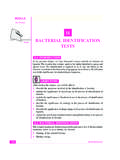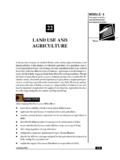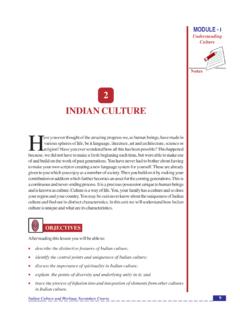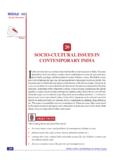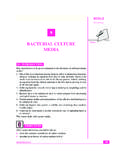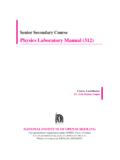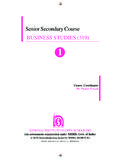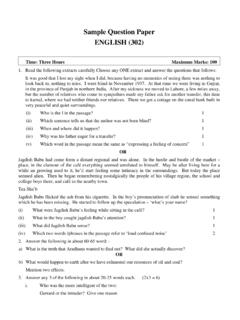Transcription of Cutting, Tailoring & Dress Making
1 Cutting, Tailoring & Dress Making Course Code no. - 605/705 606/706. Duration of course - 1 yrs. & 6 months Essential Theory hours - 100hrs Essential Practical hours - 270hrs Introduction to the course . Clothing is one of the basic needs of human being people one becoming fashion conscious. With change in fashion & style, the stitching of garment also changes. Hence keeping in view the market demand and change fashion technology, courses on cutting, Tailoring &. Dress Making have been suitably designed in the structure of non formal education.
2 The beneficiaries are new literates and people with low education levels. Besides in Indian tradition girls/women are expected to know Tailoring to fulfill the basic stitching requirement at home. Stitching of garments at home is a money saving device for lower middle income group. Besides Tailoring can be a vocation for self employment. Objective . To provide knowledge & training in Use of tools & equipment used in Tailoring trade Sewing terminology Taking correct body measurements Basic hand & machine stitches Designing, drafting & pattern Making Layout & fabric estimation Cutting, Tailoring & finishing of garments for children, ladies & gents.
3 Alteration, defects & remedies to fitting problems. Processes of quality centrol, packaging, labeling, marking, costing & promotion. Sourcing of fabrics, trends & relating so servicing process. Skill to construct professional looking garments. Enhancing employability & entrepreneur skills. Entry Qualification - 8th Pass/Literate Competencies : - 1. Identify and take care of the various tools and equipment used in cutting and Tailoring . 2. Identify and practice basic (temporary and permanent) and decorative stitches.
4 3. Take body measurements (length width and circumference) systematically and follow necessary precautions. 4. Master the use of swing machine and take care of the machine. 5. Follow precautions while using a machine. Identify and correct the defects in a machine. Identify and correct the defects in a machine. 6. Control of fullness darts, pleats, gathers 7. Make different types of seams using bias, piping and facing and plackets and 8. Make hook and eye and attach buttons, button hole etc. 9. Select fabric and appropriate colour combinations according to age, tradition.
5 Vocation and personality. 10. Follow rules of pattern Making , layout and fabric estimation 11. Design, draft, pattern Making cutting, stitching and finishing of the garments (panty, slip, jhabla, set, frock, gents pyjama, petticoat, churidar pyjama, ladies kurta, salwar etc.). 12. Surface decoration of garments using embroidery, laces, buttons, beads, sequins etc. 13. Fold, iron, pack and cost evaluation of stitched garment. 14. Marking and storing of drafts and patterns for future use. Job opportunities : After completing the course one can get employment in garment manufacturing unit or get self employed by opening a Tailoring sop or work at home.
6 Wage employment : Can get employment as cutter/tailor/checker/designers in garment manufacturing industries/ Tailoring shops/ Tailoring units in govt. sector of public sectors like jails /hospitals etc. can get employments as instructor in educational institutes. Self employment : can open his/her own Tailoring shop or can do Tailoring work at his/her own house or can take up orders work from factories. Scheme of study . Weightage :- - Theory 15% Practical 85%. Scheme of Evaluation Course code Theory Practical Internal Total 705/605 30 90 80 200.
7 706/606 30 90 80 200. Passing Criteria : - Theory 40%. Practical 50%. Internal 40%. Aggregate 50%. SUBJECT - 1 Cutting & Tailoring Section A: Foundation Unit Contents Theory Practical 1. Introduction to - Machine Operation - Operating machine Sewing Machine - Different parts of - Removing parts and machine and their practice in refixing functions. - Adjusting the parts for - Safety precautions proper functioning - Proper maintenance and - Practice in cleaning and oiling oiling 2. Tools and Description of various tools Practice in using Equipments used in used in Tailoring - Different Scissors Tailoring - Drafting tools: - Shapper, L Scale, Art - Cutting Tools: Curve, Tracing wheel - Stitching tools: - Thimble etc.
8 3. Trade Terminology - Specific terms used in - Practice in using proper drafting, cutting & terms. stitching 4. Measurement - Use of tape for - Practice in using tape Taking measurement - Taking measurement - Proper / correct - Sequencing of measurement taking, measurement. Precautions - Use of L scale - Use of L scale for measurement - Sequence of measurement 5. Drafting / Pattern - Need for drafting and - Simple drafting Making pattern Making - Pattern Making - Method of preparing - Paper pattern cutting draft - Preparing pattern cutting 6.
9 Basic Stitching - Hand stitches - Preparation of sample - Machine stitches pieces of stitches - Decorative stitches 7. Construction Skills - Knowledge about: - Preparation of sample - Seams, Drafts, Tucks, pieces using all Pleats, Buttons Hole, construction skills. Buttons Hooks and snage, Eye, Titch buttons 8. Selection of Cloth - Selection of right type of - Identification of different fabric for a particular types of fabric garment 9. Estimation of Cloth - How to estimate cloth for - Estimation by giving garments various measurements 10.
10 Colour concept Colour combination for - Practicals in selection of buttons, thread & cloth colour combination (contrast & harmony). 11. Simple Cutting and - How to mark the - Marking with different Stitching measurements on cloth measurement before cutting - Cutting the cloth as per - Leaving margin for marking, leaving margin inlays and turnings for inlays and turnings. - Skills in Stitching - Practice in stitching on paper for straight zig- zig, round etc. - Stitching of - Handkerchief / Bib /.
